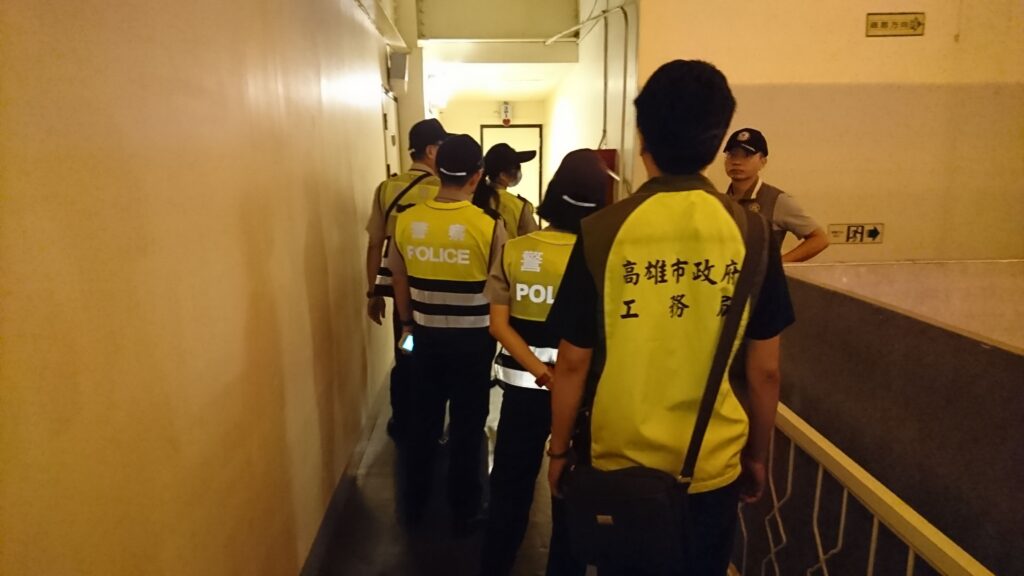impact of global crisis on the performance of tesco
If the real-estate market were to go into reverse, that could produce defaults. These houses are worth a lot, so they have an asset. Programs and policies that reduce prejudice and stereotypes and promote friendly interaction among diverse team members would benefit any diverse team. It finds that these cycles were particularly intense in the past two years, when commodity prices collapsed with the arrival of COVID-19 and then surged, in some cases to all time-highs last year. In some sense, with this global financial crisis, even as were on the tenth anniversary and we look at all the ways that the financial system is more stable, its important to remember that the individual losses and consequences of this crisis have still not been worked through. Until infrastructure investments in local regions happen, companies should stress test their supply chains and pursue strategies to make them more resilient to risks. Susan Lund: Absolutely right, Simon. Simon London: I think we should start with a little bit of history, if you dont mind, Susan. 1. Image:REUTERS/Aly Song. And many are not financially well. And so they built trillions and trillions of dollars of financial instruments whose value was riding on those mortgages being repaid. The US is an example of a country that was investing a lot in real estate, but its own savings rate was actually going down, down, down. Finally, the Ukraine wars surprisingly large impact on European car manufacturing has highlighted the risk associated with the current global supply chain. Corporate bond markets have grown up. Researchers generally agree on the dual effects of globalization: global market . COVID-19 and the retail sector: impact and policy responses - OECD But there are real questions about how central-bank monetary policy plays out in a world with digital currencies. This is not surprising. . Thats happened before. Coronavirus' business impact: Evolving perspective | McKinsey GDP growth rates are on a fiscal year basis. Producers were surprised by the sharp increase in new car orders in the second half of 2020, and with little spare capacity left in the semiconductor industry, chip production was unable to keep up with the high demand possibly also as a result of underinvestment in the years prior to the pandemic. Could we get a repeat of the same pattern of a real-estate bubble fueling a banking crisis and that spreading across the world? The combination of a recession that reduced tax revenues and increased social-welfare payments for unemployment really put a big dent in government fiscal balances. Theres a large body of scholarship examining the challenges of cross-cultural communication and collaboration: Arecent review of more than 1,100 studies published over the course of 24 years in the Journal of International Business Studies revealed that 95% of those studies focused on the negative effects of team member differences. PDF | On Jan 1, 2014, Paulo Pedroso published Pedroso, P. (2014) - Portugal and the Global Crisis - The impact of austerity on the economy, the social model and the performance of the state . The lengthening of suppliers delivery times across advanced economies since the end of 2020 is the most evident manifestation of widespread strains in global production networks. Banks are continuing to try to find a way to be profitable in this new environment with more capital and more liquid assets. The effects are computed as the difference between the path of the variables obtained under the realisation of the shock and under a counterfactual scenario in which the shock between November 2020 and September 2021 is set at zero (i.e. All global aggregates exclude the euro area. Tesco - Leading in a Crisis - BBH Global Thats even more than credit-card debt in the US. Europe and Central Asia:Growth is forecast to slow to 3.0% in 2022 year and 2.9% in 2023. It operates as a gateway to consumers from upstream sectors, accounts for almost 5% of GDP, and employs about 1 in 12 workers. With oil and gas prices soaring due to the war, transportation costs will follow suit. Simon London: Weve talked a lot so far about the borrowers. They went from basically being on par with other developing countries for their level of debt to now being at, or higher than, the level of economies like the US, Canada, and Germany. Switzerland has very high household debt, as does South Korea. Turkmenistan and Repblica Bolivariana de Venezuela are excluded from cross-country macroeconomic aggregates. So thats been another very positive development over the past ten years. Its a particular problem in these developing countries. What makes China so attractive to manufacturers? Tesco is forecast to experience a positive impact to its 2020 sales due to the effects of COVID-19 with increased demand for food & grocery globally as consumers stay at home, resulting in a sales increase of 9.2% on 2020 vs 2019. Moreover, the shift towards domestic suppliers and domestic goods might have mitigated the repercussions on industrial production. Another example is semiconductor manufacturing equipment. Thats quite worrisome for the future, because student loans cannot be defaulted on. 2023 ODI. Spread of COVID-19 Variants Alongside Inflation, Debt, and Inequality Intensifies Uncertainty. Our findings also suggest that supply chain disruptions have a significant and increasing over time effect on prices, which is much more prominent in the producer price index than in the consumer price index (Chart C, panel b). Simon London: What about the financial imbalances? Of course, it is possible to ship some of these items by air, but that is significantly more expensive, especially now that airlines need to bypass Russia. In order to purge movements in the PMI SDT from the normal lengthening associated with cyclical fluctuations, we use a monthly bivariate vector autoregression (VAR) model for the global (excluding euro area) PMI manufacturing output and the global PMI SDT, in which shocks stemming from the recovery in demand and supply chain disruptions are identified using sign restrictions. While the housing crisis was building up, you saw very large inflows of foreign money into the US. But what made this different is that there was a lot of financial innovation that had run ahead of regulation, and to some extent had run ahead of the banks ability to manage the risks, plus there just wasnt enough capital. Shipping costs have fallen recently, mainly on account of temporary factors (e.g. I would not say that any of these risks are as globally, systemically important as what we saw with the situation before the 2008 financial crisis. Tesco to reveal impact of cost-of-living crisis | The Scotsman This is already happening. East Asia and Pacific:Growth is projected to decelerate to 5.1% in 2022 before increasing slightly to 5.2% in 2023. But Chinas not alone. However, if overall consumer demand declines, there could be some easing in the global supply constraints which, as shown above, seem to be mostly the result of strong demand. Here's why, is affecting economies, industries and global issues, with our crowdsourced digital platform to deliver impact at scale. The ongoing impact of COVID-19 on global supply chains Governments will have to be involved. l'aide d'un chantillon d'entreprises de 73 pays sur la priode de janvier dcembre 2020, nous examinons les ractions des cours boursiers des entreprises multinationales (Multinational Corporations - MNCs) et domestiques (Domestic . The effects are greater on trade than on industrial production because the weakness in the logistics sector disproportionately affected trade. The second analytical section examines the implications of boom-and-bust cycles of commodity prices for emerging market and developing economies, most of which are heavily dependent on commodity exports. Tesco profits fall as Covid costs offset sales surge In this episode of the McKinsey Podcast, recorded in August 2018, Simon London speaks with McKinsey Global Institute partner Susan Lund about the global financial system ten years after the crisis that left the world reelingdetailing the state of the world economy and analyzing the potential for such a crisis to repeat itself. What is the World Economic Forum doing to manage emerging risks from COVID-19? How has the COVID-19 pandemic affected global trade? Declines in both matching efficiency and labour force participation partly reflect increases in unemployment benefits, early retirements and the need to care for children and other family members during the pandemic, as well as a reluctance to work in contact-intensive sectors. Tesco is forecast to experience a positive impact to its 2020 sales due to the effects of COVID-19 with increased demand for food & grocery globally as consumers stay at home, resulting in a sales increase of 9.2% on 2020 vs 2019. Shipping costs have increased significantly since the start of the pandemic. Strains in global production networks, which started to emerge in late 2020, are a reflection of imbalances between the supply and demand of certain goods and are creating headwinds for the ongoing global economic recovery. There are other pockets of corporate borrowing, ranging from Turkey to Chile to Vietnam. Then the economy fell into a recession and people lost their jobs, so they couldnt afford these very large mortgages. For instance, before the crisis, two-thirds of the assets of German banks wouldve been outside of Germany. The shock absorbers werent there in the global financial system. When a few households started defaulting on mortgages, the pain went far beyond those households and the banks that originated them to all these investors around the world. And around the world, governments, to one extent or another, provided financial support to the banking system and other critical industries. Global debt over the last ten years went from roughly twice the size of global GDP totoday, its about 2.4 times global GDP. It is still important to keep in mind that it is not always possible to separate contextual and personal diversity. Meanwhile, rising inflationwhich hits low-income workers particularly hardis constraining monetary policy. The most relevant elements are i) difficulties in the logistics and transportation sector, ii) semiconductor shortages, iii) pandemic-related restrictions on economic activity, and iv) labour shortages. The third analytical section explores COVID-19s impact on global inequality. Tesco: Brexit disruption 'is a challenge not a crisis' - BBC But the picture really varies by country, and its grown a lot less than corporate debt or government debt. Roughly 40 million workers were . For more, seeregional overview. The U.S. and Dutch governments have blocked ASML, the worlds largest producer of lithography equipment used to make computer chips, from selling its most advanced machines to China. They find that contextual diversity is key to aiding creativity, decision-making, and problem-solving, while personal diversity does not. we had a 30" spot on TV to share an update on how the new measures would impact shopping . This has been seen very clearly in Europe but is also true, to some extent, of the largest US banks. In a globalized not to mention socially distanced world, online collaboration is indispensable for bringing people together. Personal diversity includes differences in easily observable personal characteristics such as age, gender, language, skills, and values. As it started to unravel, we found out that those risks, rather than being diversified and spread around the world, were concentrated in some very large banks like Bear Stearns and Lehman Brothers. And the likelihood of default goes way up. UNU-WIDER : Blog : The Impact of Globalization on the World's Poor At a time when governments in many developing economies lack the policy space to support activity if needed, new COVID-19 outbreaks, persistent supply-chain bottlenecks and inflationary pressures, and elevated financial vulnerabilities in large swaths of the world could increase the risk of a hard landing. And the Chinese government has plenty of capacity to bail out the financial system, because its central government debt is quite low. Often it started in the treasury market, but then that pushed down interest rates. Then the third big potential area of risk, I would have to say, would be Chinas rapid growth and debt. Middle East and North Africa:Growth is forecast to accelerate to 4.4% in 2022 before slowing to 3.4% in 2023. We talked about it ten years ago. So financial innovation clearly played something of a role in the emergence of the 2008 crisis. For instance, cryptocurrencies. Even in China, where theyve added a lot of debt, most of it has been lent by Chinese lenders, so you dont see the international linkages in any crisis there. Accordingly, the work design must promote such exchange and provide opportunities for brainstorming, friendly feedback and discussions, as well as constructive criticism and disagreement. In our study, we observed the behaviors and interactions of 5,728 individuals in 804 remote international teams as they worked for several months on business consulting projects. Key Results Susan Lund: Thats right. How are companies responding to the coronavirus crisis? So I would never say that it couldnt happen again. This approach enables us to recover the structural shocks underlying movements in the PMI SDT, and in particular the supply-side shock, which we take as our measure of supply chain shocks. Then they took those and pooled them together again. Households in what I think of as the core crisis countries of the US, UK, Spain, and Ireland have all reduced household debt quite significantly. The impulse response functions of the VAR suggest that, after a one period shock, the effects on inflation dissipate in six to nine months, while those on real variables take around four months. All of that has made governments more indebted than ever before. We face big challenges to help the worlds poorest people and ensure that everyone sees benefits from economic growth. Russias invasion of Ukraine is adding to the woes of global supply chains. In a recent study, our team identified some of the specific ways that differences across these remote global teams can shape how they function. Such teams also consider more options, process facts more carefully, are less likely to fall into the groupthink trap, and ultimately make better decisions. [6] More specifically, we assume that disruptions to supply chains lengthen delivery times and reduce output, while the rise in demand induced by the economic recovery increases both delivery times and output. 1. Susan is a McKinsey partner and also an economist with the McKinsey Global Institute. Have those things resolved themselves? The first, on debt, compares the latest international initiative to tackle unsustainable debt in developing economiesthe G20 Common Frameworkwith previous coordinated initiatives to facilitate debt relief. For more, seeregional overview. Research: How Cultural Differences Can Impact Global Teams Although, in 2010, before financial global crisis increases to 1.6% whereas 1.73% in 2011. And for a large number of banks in Europe and Japan, this ratio is less than one. Susan Lund: One thing that we know is that the next crisis probably wont be the same as the last crisis. Some findings however were less obvious, including the depth of the impact in rural areas, the increase in inequality; the increase in indebtedness due to the widespread use of credit to buy food, and that most poverty impact came from increasing depth of poverty in the alreadypoor, rather than increased poverty headcount. To do this, we use the anonymous data provided by cookies. Theres now $60 trillion owed by governments around the world. As the US dollar strengthens, as interest rates rise, and if countries come under fire like Turkey is as we record this, a lot of those debts could be unsustainable. At the same time, all of this was fueling housing-price increases. Then on the borrower side, the US was the worlds largest borrower, receiving capital flows. [2] As a result, shipping costs, especially from the main Asian ports to the United States and Europe, have skyrocketed since the end of 2020. The views expressed in this article are those of the author alone and not the World Economic Forum. Julia Compton, Steve Wiggins and Sharada Keats, Fostering a more equitable economic order. This paper is a general literature . Government debt has grown very rapidly in advanced economies [Exhibit 1]. The authors unpack their recent research on how diversity works in remote teams, concluding that benefits and drawbacks can be explained by how teams manage the two facets of diversity: personal and contextual. Projects that require creativity and unconventional thinking would benefit from contextual diversity. What is the pattern of household borrowing globally? And the biggest systemically important financial institutions actually hold even more capital than that. France is increasing its dependence on nuclear power plants, which already generate 70% of its electricity. What were the origins of the financial crisis? How COVID-19 is changing global value chains | UNCTAD Second, the boost that contextual diversity can provide for creativity and innovation can only be fully realized when team members freely exchange ideas and knowledge. Tesco | Customer Success | Splunk Our analysis of Covid's impact on global trade reveals three key trends. The World Bank Group works in every major area of development. The column labeled 2019 refers to FY2019/20. Russia's invasion of Ukraine is adding to the woes of global supply chains. And is the global banking system more secure, more stable than it was going into the crisis? Our empirical analysis suggests that supply chain shocks account for around one-third of the strains in global production networks. Learn more about how we use cookies, We are always working to improve this website for our users. And what managers can do to help their international teams succeed. Additional training on online communication and collaboration tools would be particularly useful for GVTs. In 2020, global trade fell by 8.9%, the steepest drop since the global financial crisis. The COVID-19 crisis has amplified profound fault lines in the functioning of global value chains (GVCs) and exposed the fragility of a model characterized by high interdependencies between leading firms and suppliers located across several continents. Studies on how poor people coped with food price rises highlight some areas of policy that merit further support, including education, health and most especially finance for the poor. The chart also suggests that there is a significant amount of heterogeneity between advanced economies and emerging economies, with economies like the United States, the euro area and the United Kingdom being much more affected than key emerging economies. World trade volume of goods and nonfactor services. Its not the same shadow-banking entities that we saw before the crisis, but it still bears watching. .chakra .wef-facbof{display:inline;}@media screen and (min-width:56.5rem){.chakra .wef-facbof{display:block;}}You can unsubscribe at any time using the link in our emails. Susan Lund: Well regulators were there, but banks were creating new types of financial instruments. Many emerging and developing economies are withdrawing policy support to contain inflationary pressureswell before the recovery is complete. By contrast, the greater contribution of demand factors is not surprising given the procyclicality of delivery times in periods of economic recovery and the unprecedented economic recovery that has followed the initial COVID-19 shock. This trend has the potential to leave lasting scars: for example, losses to human capital caused by disruptions in education can spill over across generations. The latest observations are for November 2021. Virtual collaboration across global teams is not without challenges. If China decides to back Russia in the Ukraine conflict, it would only fuel that movement. A decade after the global financial crisis: What has (and hasnt) changed? Prior to the crisis, the US had a very large and liquid corporate bond market. The same would be true in Spain, where the economy has grown quite strongly, but real wages have gone down quite substantially. The latest Global Economic Prospects report features analytical sections that provide fresh insights into three emerging obstacles to a durable recovery in developing economies. Any easing in labour shortages in the coming months will depend on the evolution of government support, as well as pandemic containment measures and the number of new COVID-19 cases. Russia and Ukraine are also big exporters of grains such as corn, barley, and wheat as well as fertilizer. The analysis also shows that commodity-price booms since the 1970s have tended to be larger than busts, creating significant opportunities for stronger and more sustainable growth in commodity-exporting countriesif they employ disciplined policies during booms to take advantage of windfalls.
Nursing Fees In Canada For Permanent Resident,
Raiden Hypercarry Without C6 Sara,
Articles I






